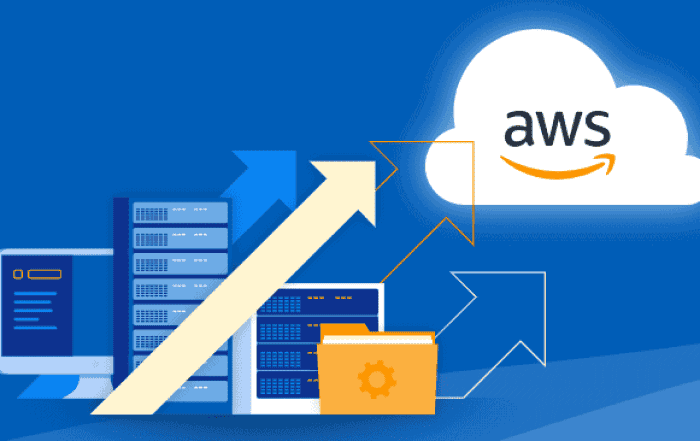
In today’s fast-paced digital landscape, many businesses are recognizing the advantages of cloud computing. The flexibility, scalability, and cost-effectiveness offered by cloud platforms make them an attractive choice for organizations of all sizes. Amazon Web Services (AWS), one of the leading cloud service providers, has emerged as a popular option for businesses looking to migrate their infrastructure and applications to the cloud. However, migrating to AWS requires careful planning and execution to ensure a seamless transition. In this blog post, we will explore some strategies and tools that can help businesses achieve a smooth and successful migration to AWS.
1. Define Your Cloud Migration Strategy:
Before embarking on a cloud migration journey, it is crucial to define a clear migration strategy. This involves identifying the goals, scope, and timeline of the migration process. It is essential to assess which applications and workloads are suitable for migration and prioritize them based on business value and complexity. Depending on the requirements, businesses can choose from different migration strategies:
a. Lift and Shift: This strategy involves moving applications and infrastructure to AWS with minimal changes. It is a quick and straightforward approach, but it may not take full advantage of AWS services.
b. Replatforming: In this strategy, applications are migrated to AWS, making some modifications to optimize performance and take advantage of cloud-native features. It offers a balance between speed and taking advantage of cloud capabilities.
c. Refactoring: This strategy involves rearchitecting applications to leverage AWS cloud services fully. It offers the greatest benefits in terms of scalability, performance, and cost optimization but requires significant effort and time.
Choosing the right migration strategy depends on factors such as the complexity of the application, time constraints, and the desired level of optimization.
2. Conduct a Cloud Readiness Assessment:
To ensure a successful migration, it is important to assess the readiness of your applications and infrastructure for the cloud. This involves analyzing the dependencies, performance characteristics, and resource utilization of your existing systems. AWS provides various tools and services that can assist in this assessment:
a. AWS Application Discovery Service: This tool helps identify dependencies among applications and provides insights into their performance and resource utilization. It enables businesses to make informed decisions about which applications are suitable for migration.
b. AWS CloudEndure: This service simplifies the migration process by automating the replication of servers and applications to AWS. It provides continuous replication, ensuring minimal downtime during migration.
c. AWS Migration Hub: This centralized dashboard allows businesses to track the progress of their migration projects across multiple AWS services. It provides visibility into the migration process and enables easy coordination between teams.
3. Plan for Data Migration:
Data migration is often a critical aspect of cloud migration. Moving large volumes of data to AWS can be challenging and time-consuming. To streamline the process, AWS offers several tools and services:
a. AWS Database Migration Service (DMS): This fully managed service helps migrate databases to AWS easily. It supports a wide range of database engines and provides minimal downtime during the migration process.
b. AWS Snowball: For large-scale data migrations, AWS Snowball is a physical device that helps transfer large amounts of data securely. It simplifies the migration process by eliminating the need for high-speed internet connections.
c. AWS DataSync: This service simplifies and accelerates data transfer between on-premises storage systems and AWS. It ensures secure and efficient migration of large datasets.
4. Ensure Security and Compliance:
When migrating sensitive data and applications to the cloud, security and compliance should be top priorities. AWS offers a robust set of security services and features to help businesses protect their assets:
a. AWS Identity and Access Management (IAM): IAM allows businesses to manage user access and permissions to AWS resources. It provides fine-grained control over who can access and modify resources, reducing the risk of unauthorized access.
b. AWS Key Management Service (KMS): KMS enables businesses to create and control the encryption keys used to secure their data. It provides a secure and scalable solution for managing encryption keys in the cloud.
c. AWS CloudTrail: This service provides a detailed audit trail of all AWS API calls, allowing businesses to monitor and analyze activity in their AWS accounts. It helps meet compliance requirements and provides visibility into potential security issues.
5. Optimize Cost and Performance:
One of the key advantages of cloud migration is the ability to optimize costs and improve performance. AWS offers various services and tools to help businesses achieve these goals:
a. AWS Cost Explorer: This service provides insights into AWS usage and helps businesses analyze and optimize costs. It enables businesses to identify cost-saving opportunities and make informed decisions about resource allocation.
b. AWS Trusted Advisor: Trusted Advisor provides recommendations to optimize AWS resources for cost, performance, security, and fault tolerance. It helps businesses follow best practices and improve the efficiency of their AWS deployments.
c. AWS Auto Scaling: This service automatically adjusts the capacity of AWS resources based on demand. It ensures that applications have the right amount of resources at all times, improving performance and reducing costs.
In conclusion, migrating to AWS offers numerous benefits, but it requires careful planning and execution. By defining a clear migration strategy, conducting a cloud readiness assessment, planning for data migration, ensuring security and compliance, and optimizing cost and performance, businesses can achieve a seamless and successful migration to AWS. AWS provides a wide range of tools and services to simplify the migration process and help businesses leverage the full potential of the cloud. With proper planning and the right tools at hand, businesses can embark on their cloud migration journey confidently and unlock the full benefits of AWS.








